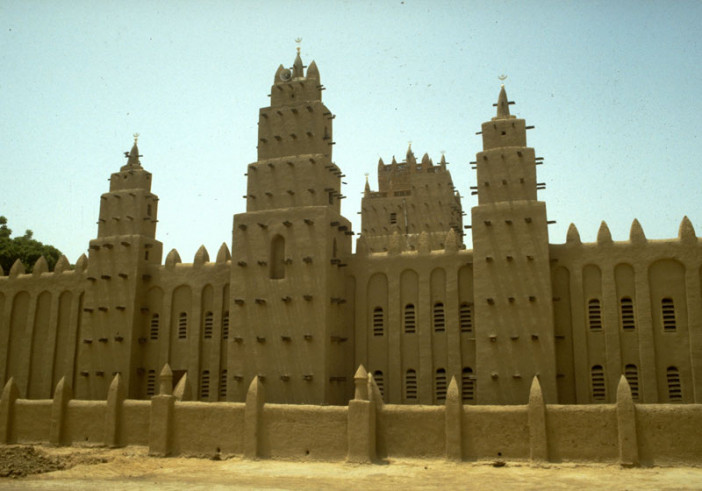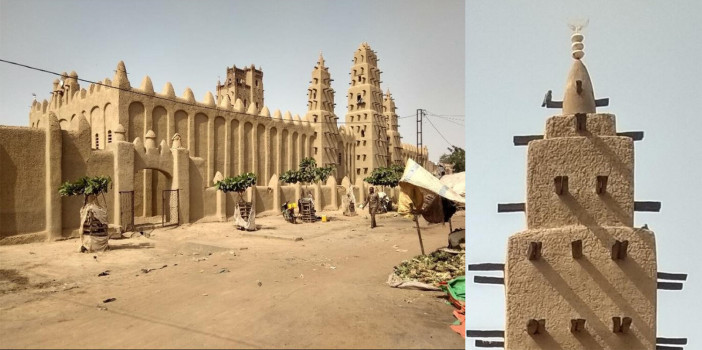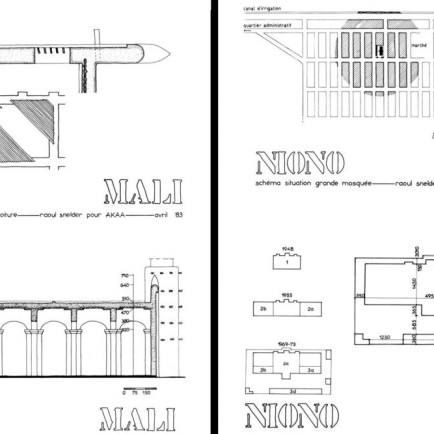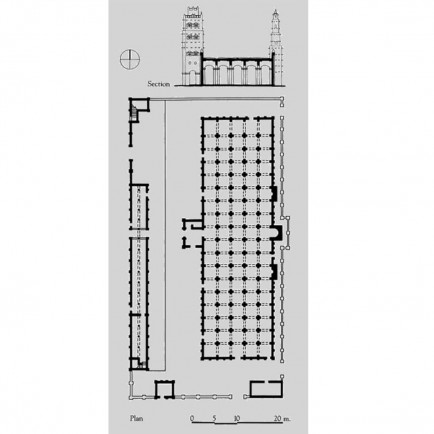Great Mosque of Niono
History
The mosque was first built in 1948 by a group of Djenne native bricklayers under the direction of Lassiné Minta. Niono underwent a number of significant expansions to meet the city's expanding population; the final one was finished in 1973.
Urban and Architectural
With a main room measuring 658 square meters and a women's prayer hall covering two levels, it now takes up 1,800 square meters. It includes three additional minarets on the east end along the qibla wall in addition to the main minaret beside the west entrance. The mosque has 68 pillars inside and a hypostyle outside.
Description
This mosque is made of mud bricks and is a significant piece of local vernacular architecture. It was designed and built by a local master mason utilizing mostly local resources and solely Niono-based laborers. The region has been using the same building methods and supplies for generations, including load-bearing mud brick walls and arches supporting floors and roofs made of wood, mat, and dirt. The length of wood that is available determines the structural module. Each mud brick pier supports the four-way springing of arches. The flat span of the roof is supported by the arches in turn.
The Aga Khan Award for Architecture's 1983 cycle included the mosque as one of its honorees.
References
https://fr.wikipedia.org/wiki/Grande_Mosqu%C3%A9e_du_Vendredi_de_Niono
https://www.a3africa.org/the-collection/the-great-mosque-of-niono-mali
https://www.archnet.org/sites/224
https://hiddenarchitecture.net/great-mosque-of-niono/
Details
Location
7222+72X Great Mosque of Niono, Molodo, Mali
Worshippers
900
Owners
baritone from Djenné
Architect Name
Year of Build
1973
Area
1800
Drawings
Map
History
The mosque was first built in 1948 by a group of Djenne native bricklayers under the direction of Lassiné Minta. Niono underwent a number of significant expansions to meet the city's expanding population; the final one was finished in 1973.
Urban and Architectural
With a main room measuring 658 square meters and a women's prayer hall covering two levels, it now takes up 1,800 square meters. It includes three additional minarets on the east end along the qibla wall in addition to the main minaret beside the west entrance. The mosque has 68 pillars inside and a hypostyle outside.
Description
This mosque is made of mud bricks and is a significant piece of local vernacular architecture. It was designed and built by a local master mason utilizing mostly local resources and solely Niono-based laborers. The region has been using the same building methods and supplies for generations, including load-bearing mud brick walls and arches supporting floors and roofs made of wood, mat, and dirt. The length of wood that is available determines the structural module. Each mud brick pier supports the four-way springing of arches. The flat span of the roof is supported by the arches in turn.
The Aga Khan Award for Architecture's 1983 cycle included the mosque as one of its honorees.







